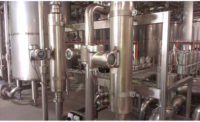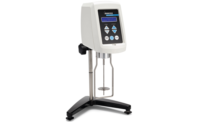Arla Foods Ingredients developed a new process that does away with the need for a dedicated cream cheese production setup, cuts processing time in half and eliminates waste.
All you need is a standard set yogurt processing line, and you’re ready to broaden your business base with profitable cream cheese.
Arla Foods Ingredients, Basking Ridge, N.J., developed a new process that does away with the need for a dedicated cream cheese production setup, cuts processing time in half and eliminates waste.
Fast and simple
“Cream cheese production normally requires lots of milk, lots of costly equipment and up to eight processing steps,” says customer support manager Bo Johansen. “We have made it possible to produce cream cheese faster and more simply on a set yogurt processing line with only very small adjustments.”
The 50-70% dry matter content of cream cheese is traditionally obtained through concentration, achieved by separators or ultra-filtration equipment. This means that as much as two-thirds of the raw material, in the form of acid whey and permeate, are drawn out and discarded.
Nothing taken out
Arla Foods Ingredients turned this concentration step on its head. Instead of taking moisture out, it added more dry matter. Functional milk proteins interact with the process to secure the desired consistency, whether the goal is a firm, bake-stable cream cheese or a spreadable one.
Fat content may vary between 5% and 30%. Salt content, on the other hand, is lower than in traditional cream cheese, which is dependent on salt for its quality.
As no other stabilizers are added to milk proteins, the final cream cheese satisfies consumer demand for more clean label products.
“With our new process, you get the same amount out as you put in, with less energy consumption along the way,” Johansen says. “That also paves the way for cream cheese production with a lower carbon footprint.”
Application trials show the cream cheese produced has a more uniform quality than standard and a more than two-month shelf life.
Get our new eMagazine delivered to your inbox every month.
Stay in the know on the latest dairy industry trends.
SUBSCRIBE TODAYCopyright ©2024. All Rights Reserved BNP Media.
Design, CMS, Hosting & Web Development :: ePublishing

